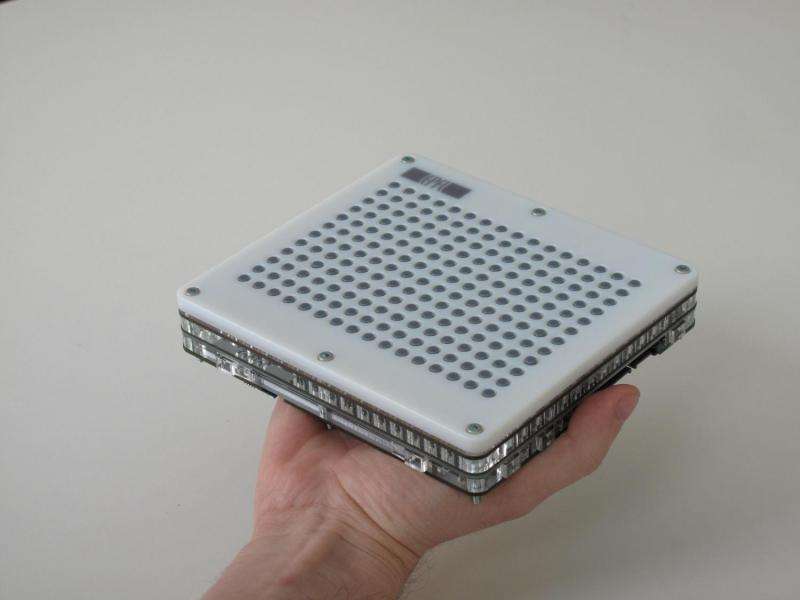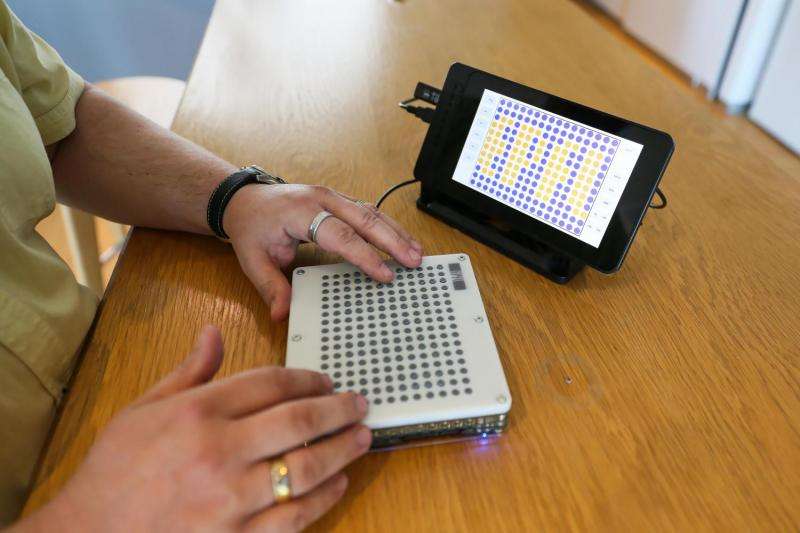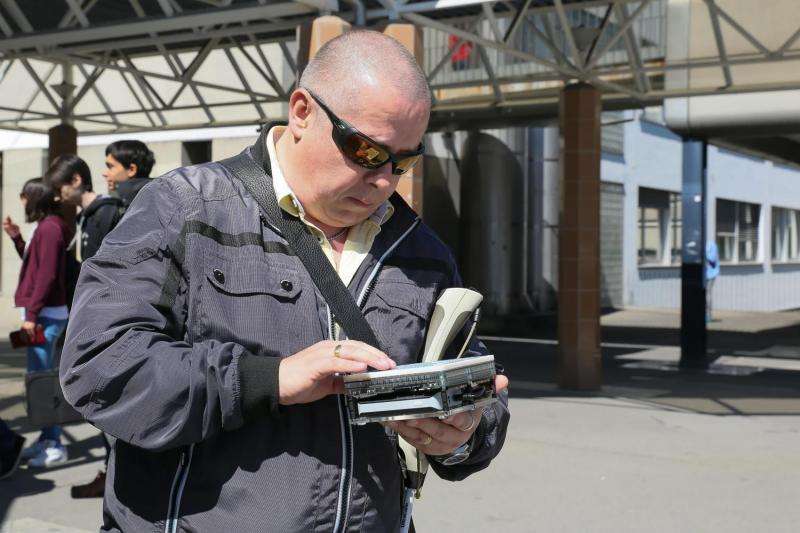A touchable tablet to guide the visually impaired

Researchers at EPFL have developed a tablet to help people with a visual impairment find their way around unfamiliar places. The device very quickly forms shapes and relief maps that users can then explore with their fingers, using their sense of touch. The tablet could also be used to help visually impaired schoolchildren learn subjects such as geometry or mathematics.
Navigating in an unfamiliar setting is a major challenge for people with a visual impairment. To make it easier for them to find their way, EPFL researchers have developed a lightweight and reconfigurable touchscreen tablet capable of generating shapes and maps. Users can then "read" the graphic data on the screen with their fingers. The research is part of the European project Blindpad.
Measuring 12 by 15 centimeters, the tablet comprises 192 tiny buttons that can move up and down in just a few milliseconds, almost instantaneously creating patterns such as the layout of a building, street or conference room. Users can also zoom in on a specific part of the map. The actuators are fast enough to make individual buttons vibrate. The technology has already been tested by several visually impaired people and will be presented at the ACM Conference on Human Factors in Computing Systems (CHI 2017) in Denver on 6 May.
Using magnets to save energy
The underlying mechanism is straightforward. Each button contains a tiny magnet placed between two coils and two thin layers of steel. Any given button can be moved up or down by generating a local magnetic field by driving current through one of the coils for five milliseconds. The magnetized buttons then remain in the up or down position because they attach to one the two steel plates. "The system requires no power to keep the button in place," said Herbert Shea, director of EPFL's Microsystems for Space Technologies Laboratory, which is located in Microcity, Neuchatel (CH). "This keeps energy consumption to a minimum." The tablet also comes equipped with Bluetooth, so it can connect to computers and tablet PCs.
The perfect complement to Braille or a white cane
For Herbert Shea, this tablet fills a gap in the market. "People can read with a Braille display, and detect nearby obstacles with a white cane. Our tablet, which will not cost much to produce, will provide graphic information in real time, so the user can check out the layout of a room or street before venturing into it."
Denis Maret visited EPFL to test a prototype of the new tablet and was impressed. "Those of us who are visually impaired currently have to use a white cane with an audio GPS when we go to new places," he explained. "Like in a vehicle, the GPS tells us when to turn. But we have no way of checking that information, or of making a mental map of the place. This technology will make us more independent."

A support for schoolchildren
In addition to helping guide people around, the tablet could also be used to help visually impaired schoolchildren. "In geometry class, the tablet could be connected to the board to instantly reproduce all the shapes and graphics drawn by the teacher," said Shea. In cooperation with the BlindPad project partners, visually impaired children in Poland and Italy are currently testing the tablet with learning exercises.






















